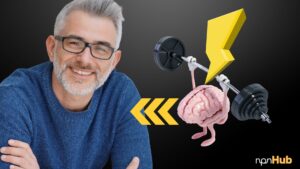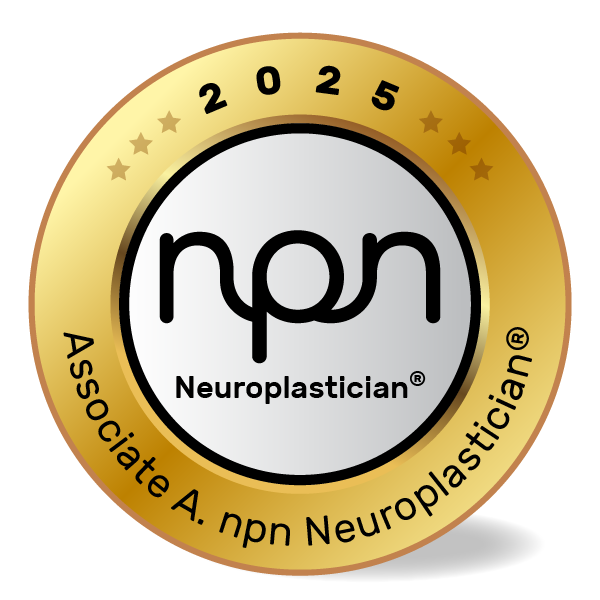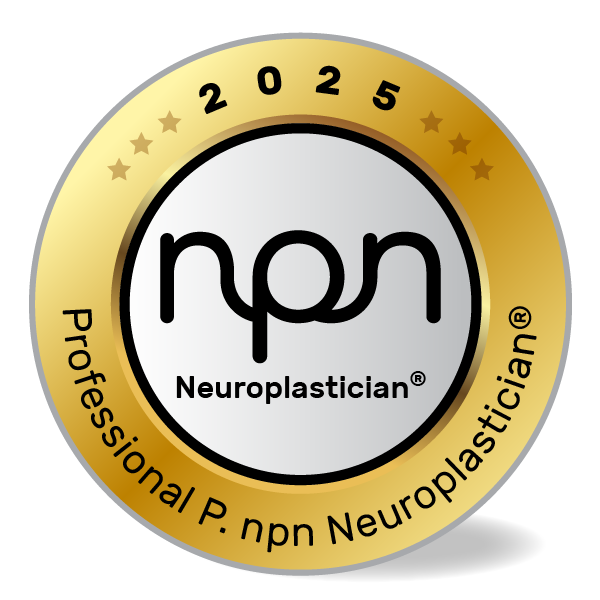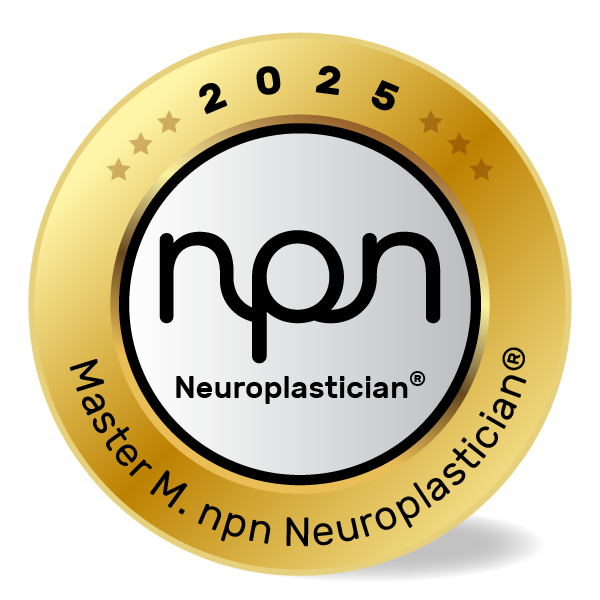Learn how anxiety rewires the brain – and how to help clients reset.
npnHub Editorial Member: Dr. Justin Kennedy curated this blog
Key Points
- Anxiety activates key brain systems, including the amygdala, prefrontal cortex, and HPA axis
- Brain activity during anxiety can impair decision-making and memory recall
- Neurotransmitters like cortisol, norepinephrine, and GABA shift cognitive and emotional states
- Repeated anxiety changes neural pathways through neuroplasticity
- Practitioners can apply targeted strategies to rewire anxious patterns
- Understanding the anxious brain enables personalized, science-based interventions
1. What Is Anxiety?
During a leadership coaching session, an executive admitted she dreads Monday mornings. She experiences a racing heart, tight chest, and cloudy thinking just reading her calendar. Rather than dismiss it as “stress,” her coach paused to consider the deeper mechanism: anxiety – not just a feeling, but a full-body-brain response.
This example illustrates how anxiety surfaces in everyday professional contexts. It’s not always a panic attack – it can be subtle but disruptive.
Anxiety is a heightened state of arousal that prepares the body to face perceived threats. It is governed by the brain’s threat detection and regulation systems. Neuroscience has shown that anxiety involves hyperactivity in the amygdala (the fear center) and reduced activity in the prefrontal cortex (which helps with logic and planning) (Source).
Studies from Stanford University using fMRI scans have mapped these shifts, revealing that anxious brains tend to misfire even in non-threatening situations – essentially, the brain learns to perceive threat where none exists (Source).
2. The Neuroscience of Anxiety
In a workshop on performance under pressure, a facilitator asked participants to list common signs of anxiety. One therapist noted her memory “blanks out” before public speaking. A teacher shared how her stomach tightens during parent-teacher meetings. These aren’t just psychological – they’re neurological.
Anxiety activates a neural cascade beginning with the amygdala, the part of the brain that processes emotional salience. When a potential threat is detected, it signals the hypothalamus, initiating the HPA axis (hypothalamic-pituitary-adrenal axis), which releases cortisol and norepinephrine. These chemicals heighten alertness, increase heart rate, and sharpen focus – for survival.
However, in chronic anxiety, this same mechanism becomes dysregulated. The prefrontal cortex – responsible for planning, judgment, and emotional regulation – goes offline under sustained threat response. According to research, anxiety leads to “prefrontal disengagement,” meaning logic-based interventions (like “just think positively”) often fail when someone is flooded by anxiety (Source).
Key areas involved:
- Amygdala (threat detection)
- Hippocampus (contextual memory)
- Prefrontal cortex (executive regulation)
- Insula (interoceptive awareness)
3. What Neuroscience Practitioners, Neuroplasticians and Well-being Professionals Should Know About Anxiety
In a session with a high-performing client, a coach noticed that every time they discussed career uncertainty, the client’s hands trembled. Instead of pushing through the agenda, the coach asked about the physical symptoms, and learned they had been dealing with anxiety for years but never labeled it that way.
This illustrates a key point: many clients don’t realize what anxiety feels like – or how much it influences their decisions, performance, and self-perception.
Neuroscience practitioners should know that anxiety is not just “in the mind” – it involves real, measurable shifts in brain activity and chemistry. The challenge is not eliminating anxiety altogether, but helping the brain return to balance.
Common myths and questions practitioners encounter:
- “Isn’t anxiety just a mental thing?”
- “Can anxious brains really change through coaching or therapy?”
- “Do medications fix the brain, or just mask the symptoms?”
Research from the National Institute of Mental Health has shown that anxiety disorders result from complex neural dysregulation, not weak character or lack of willpower NIMH.
Practitioners should recognize:
- Anxiety distorts attention and memory
- It suppresses curiosity and creativity
- The anxious brain can relearn calm through structured, repeated practice
4. How Anxiety Affects Neuroplasticity
Neuroplasticity – the brain’s capacity to change – is both a curse and a cure when it comes to anxiety. When the brain repeatedly activates anxious patterns, it reinforces them. Neural networks associated with hypervigilance, avoidance, and catastrophizing grow stronger. This is called maladaptive plasticity.
However, the same principle allows for adaptive rewiring. Through practices like cognitive reappraisal, mindfulness, and exposure therapy, the brain begins forming new pathways for resilience. A 2015 study found that consistent mindfulness training reduces amygdala volume while increasing prefrontal control in anxious individuals (Source).
Anxiety shapes the brain, but intentional, guided practice reshapes it.
5. Neuroscience-Backed Interventions to Improve Anxiety Regulation
Why Behavioral Interventions Matter
In high-stakes environments – like classrooms, coaching sessions, or hospitals – anxiety often blocks performance and engagement. Practitioners need tools that target the nervous system directly. Consider a coach whose client freezes during every review cycle. Instead of coaching mindset only, the practitioner introduces daily brain-regulating exercises.
1. Rewire with Interoceptive Awareness
Concept: Interoception – the brain’s ability to sense internal signals – is often hijacked during anxiety. Training it enhances emotional regulation (Khalsa et al., 2018, Biological Psychology).
Example: A well-being expert teaches a client to track breath and heartbeat during moments of overwhelm.
✅ Intervention:
- Guide clients through body scans during coaching sessions
- Teach them to name physical sensations (e.g., “I feel tight in my chest”)
- Pair breathing techniques with interoceptive labeling
2. Build Prefrontal Control with Cold Cognition
Concept: Cold cognition refers to non-emotional reasoning. Activating it dampens limbic reactivity (Etkin et al., 2015, Nature Neuroscience).
Example: A neuroplastician asks a client to list three facts vs three fears before making a decision.
✅ Intervention:
- Use fact-finding journaling exercises
- Introduce the “Facts vs Stories” technique
- Encourage delayed decisions during emotional spikes
3. Regulate the Vagus Nerve with Breathwork
Concept: Slow diaphragmatic breathing activates the vagus nerve, reducing sympathetic overdrive (Porges Polyvagal Theory).
Example: An educator leads students in 2-minute breathing breaks to ease classroom anxiety.
✅ Intervention:
- Teach 4-7-8 breathing technique
- Practice box breathing before sessions
- Use HRV biofeedback if available
4. Use Exposure to Rewrite Avoidance Circuits
Concept: Exposure therapy weakens fear-based circuits and strengthens tolerance pathways (Craske et al., 2008).
Example: A therapist helps a socially anxious teen gradually attend short group events, tracking emotional reactivity.
✅ Intervention:
- Create fear hierarchies collaboratively
- Celebrate small exposures with verbal reward
- Review neural “wins” to reinforce growth
6. Key Takeaways
Anxiety is not just a mental glitch – it’s a full-brain experience shaped by survival systems. But here’s the powerful part: what is wired can be rewired. By understanding anxiety’s neural blueprint, practitioners can empower clients to retrain their brain – toward calm, clarity, and resilience.
🔹 The amygdala, hippocampus, and prefrontal cortex all shift under anxiety
🔹 Neuroplasticity works both ways – maladaptive and adaptive
🔹 Interventions must target body-brain systems, not just mindset
🔹 With repetition and guidance, anxious brains can unlearn fear
Every session can be a step toward neural freedom.
7. References
- Etkin, A., Büchel, C., & Gross, J. J. (2015). The neural bases of emotion regulation. Nature Neuroscience, 18(11), 1500–1506.https://pubmed.ncbi.nlm.nih.gov/26481098/
- Craske, M. G., Kircanski, K., et al. (2008). Maximizing exposure therapy: An inhibitory learning approach. Behaviour Research and Therapy, 46(1), 5–27.https://pmc.ncbi.nlm.nih.gov/articles/PMC4114726/
- Khalsa, S. S., et al. (2018). Interoception and mental health: A roadmap. Biological Psychology, 138, 1–15.https://pubmed.ncbi.nlm.nih.gov/29884281/
- Taren, A. A., et al. (2015). Mindfulness meditation training alters stress-related amygdala resting state functional connectivity. Translational Psychiatry, 5(5), e556.https://pubmed.ncbi.nlm.nih.gov/26048176/
- Porges, S. W. (2011). The Polyvagal Theory: Neurophysiological foundations of emotions, attachment, communication, and self-regulation. Norton. https://pmc.ncbi.nlm.nih.gov/articles/PMC3490536/















